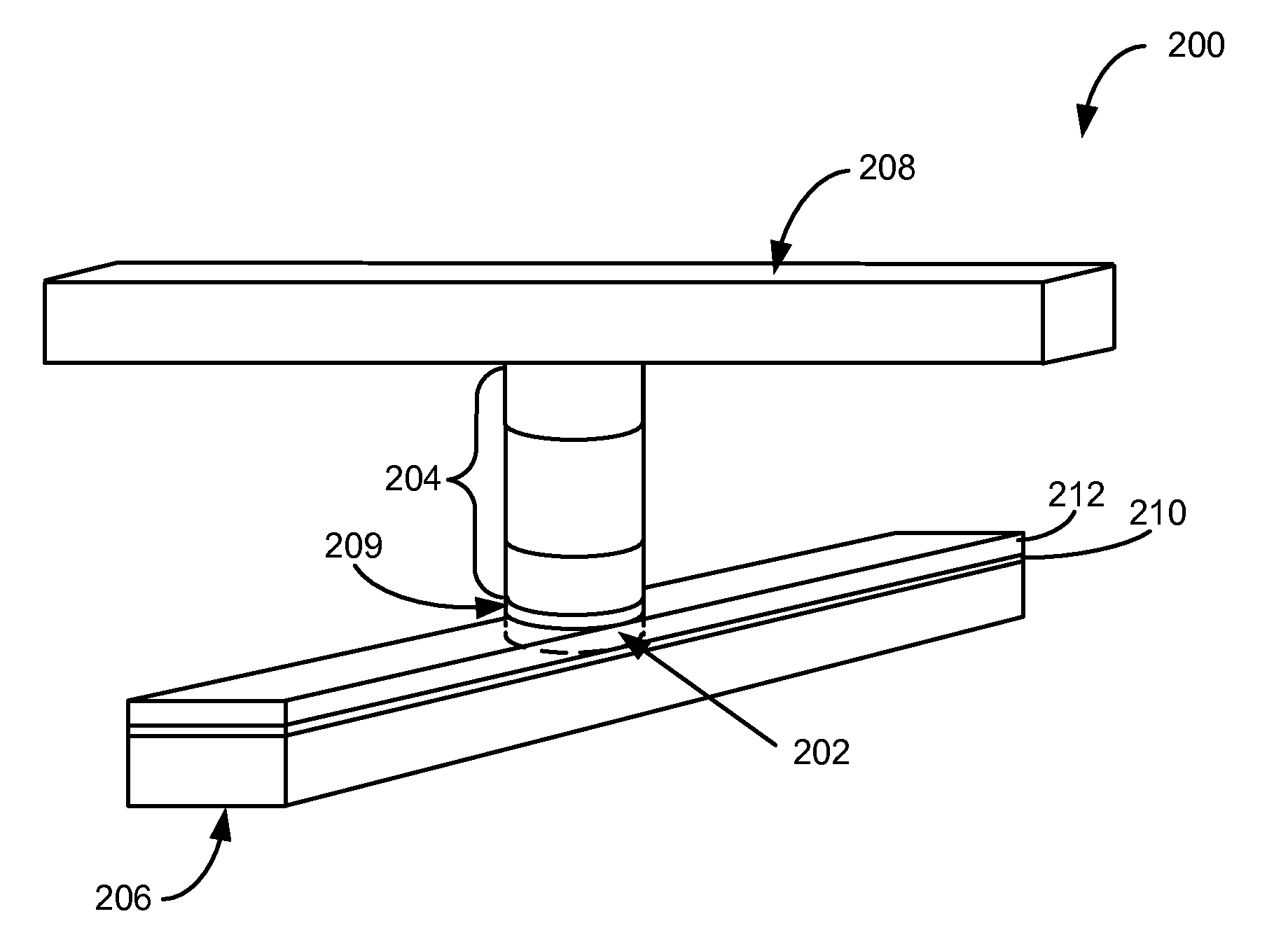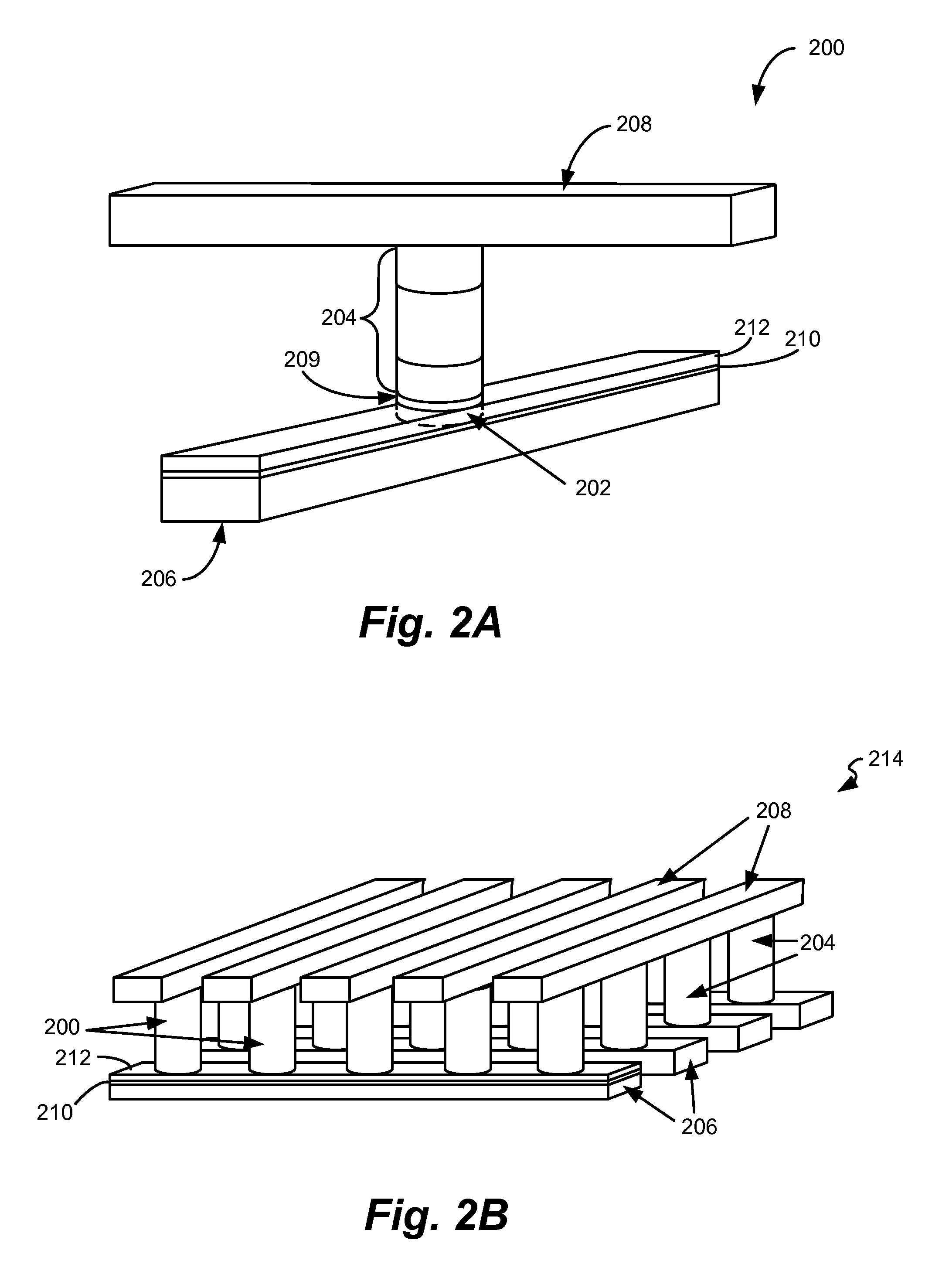Memory cell that employs a selectively fabricated carbon nano-tube reversible resistance-switching element formed over a bottom conductor and methods of forming the same
a technology of reversible resistance and switching element, which is applied in the field of nonvolatile memories, can solve the problems of technical challenges in the manufacture of memory devices from rewriteable resistivity-switching materials
- Summary
- Abstract
- Description
- Claims
- Application Information
AI Technical Summary
Benefits of technology
Problems solved by technology
Method used
Image
Examples
first exemplary embodiment
of a Memory Cell
[0033]FIG. 2A is a simplified perspective view of a first embodiment of a memory cell 200 provided in accordance with the present invention. With reference to FIG. 2A, the memory cell 200 includes a reversible resistance-switching element 202 (shown in phantom) coupled in series with a diode 204 between a first conductor 206 and a second conductor 208. In some embodiments, a barrier layer 209 such as titanium nitride, tantalum nitride, tungsten nitride, etc., may be provided between the reversible resistance-switching element 202 and the diode 204.
[0034]As will be described further below, the reversible resistance-switching element 202 is selectively formed so as to simplify fabrication of the memory cell 200. In at least one embodiment, the reversible resistance-switching element 202 includes at least a portion of a CNT material formed on a CNT seeding layer such as titanium nitride, tantalum nitride, nickel, cobalt, iron or the like. For example, a titanium or tant...
PUM
 Login to View More
Login to View More Abstract
Description
Claims
Application Information
 Login to View More
Login to View More - R&D
- Intellectual Property
- Life Sciences
- Materials
- Tech Scout
- Unparalleled Data Quality
- Higher Quality Content
- 60% Fewer Hallucinations
Browse by: Latest US Patents, China's latest patents, Technical Efficacy Thesaurus, Application Domain, Technology Topic, Popular Technical Reports.
© 2025 PatSnap. All rights reserved.Legal|Privacy policy|Modern Slavery Act Transparency Statement|Sitemap|About US| Contact US: help@patsnap.com



